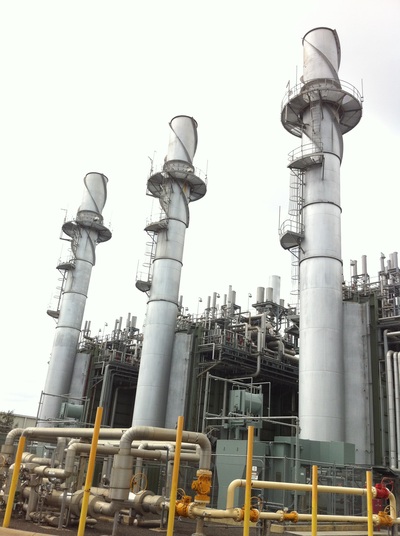Mainpac assists power plant with better asset management
Monday, 18 March, 2013
As an asset-intensive operation with more than 8500 assets, the Smithfield Energy Facility in Sydney, New South Wales, needed a better way to manage and maintain its assets. It chose Mainpac 2011 Enterprise Asset Management (EAM) software to provide better visibility into its assets and assist in achieving its goal of better management of maintenance spare parts.
The Smithfield site, owned by Marubeni Power Development Australia, is a power cogeneration facility providing electricity and steam to customers including an electricity wholesaler and a paper manufacturer. Those customers rely on Smithfield to provide an uninterrupted service, so equipment uptime is extremely important.

Site Manager Michael Heazlewood says that keeping the plant running and staying on top of maintenance, including upgrades and obsolescence, are his main challenges.
“A specific challenge we’re working on this year is getting our routine and outage maintenance spare parts under control, as our system to track inventory was not consolidated or easy to measure and manage.
“To minimise costs and reduce the need for extensive storage space, we already keep a relatively low inventory of spare parts, which we build up for planned outage periods as needed. We then consume the parts during the scheduled maintenance, depleting our inventory again. So it’s important as the plant ages to make sure that we don’t need to call on spare parts inventory that hasn’t been accounted for,” said Heazlewood.
“We’re also working on changing our maintenance approach to more of a condition-based system to extend the intervals between our outages. To do that without increasing the risk of equipment failure, we have to really upgrade each part of the plant as well as the main turbine parts, so then instead of overhauling every five years, we might try to push it out to a six- to nine-year interval, which reduces the burden on the maintenance team as well as reducing costs associated with parts and labour.”
In order to extend maintenance intervals and effectively set and manage the overall maintenance strategy for the Smithfield facility, Heazlewood needed a state-of-the-art asset management system that could be fully customised and supported locally.
“We chose Mainpac because the team was very responsive and available, and we were able to sit down with them to talk about what we needed, then customise the system accordingly. Mainpac 2011 enables us to structure our view of our assets a lot better, which gives us a clearer picture of our maintenance operations and is an effective management tool. Once the implementation of the system was complete and all the information was available, we found that we had approximately 8500 assets where previously we only had visibility into about half that number. Now we can see everything, so we can measure and manage it more effectively.”
Mainpac 2011 allows users to segregate and structure asset data to suit the organisation’s requirements. The operational views are flexible and can be arranged in hierarchies across multiple levels. It also allows users to define basic asset records including spare parts. Then by recording the assets’ status, condition and criticality, users can generate predictive and preventive maintenance work.
“Mainpac will allow us to strategically and effectively manage our assets, particularly from a maintenance and outage perspective. We have only been using the system for a couple of months but so far we are very happy with its performance,” he said.
“The migration was seamless and our goal was to have a very simple system to start with that we could then customise and expand as we move forward. That’s what Mainpac has delivered. There are a number of features that we haven’t turned on yet, but we do intend to use those features moving forward.”
In future, Heazlewood plans to use Mainpac 2011 to manage his purchasing system: “Our operator routines are in there now and all our preventative maintenance tasks are in there, so by adding the purchasing side we can keep a record of maintenance activities plus their associated costs,” he said.
The Mainpac system is set to deliver long-term benefits to the Smithfield facility, but there were also some immediate benefits.
“One of the most important things for us was the timeframe in which we could have the system fully implemented and all the data migrated from our old system. We set a deadline of a couple of months and that’s what we achieved. This speed was helped by the fact that the Mainpac team sat down with us here on site and did the implementation with us, which was great,” said Heazlewood.
“They also provided excellent training as we went along, so we were able to get up and running with the system very quickly.”
Anticipating maintenance problems with predictive analytics
By utilising predictive analytics, process manufacturers can predict failures, enhance...
Air-gapped networks give a false sense of security
So-called 'air-gapped' OT networks can still fall victim to cyber attacks, so what is the...
Maximising automation flexibility: the ISV-driven approach
Vendor lock-in has long been a significant barrier to innovation in the industrial sector, making...












